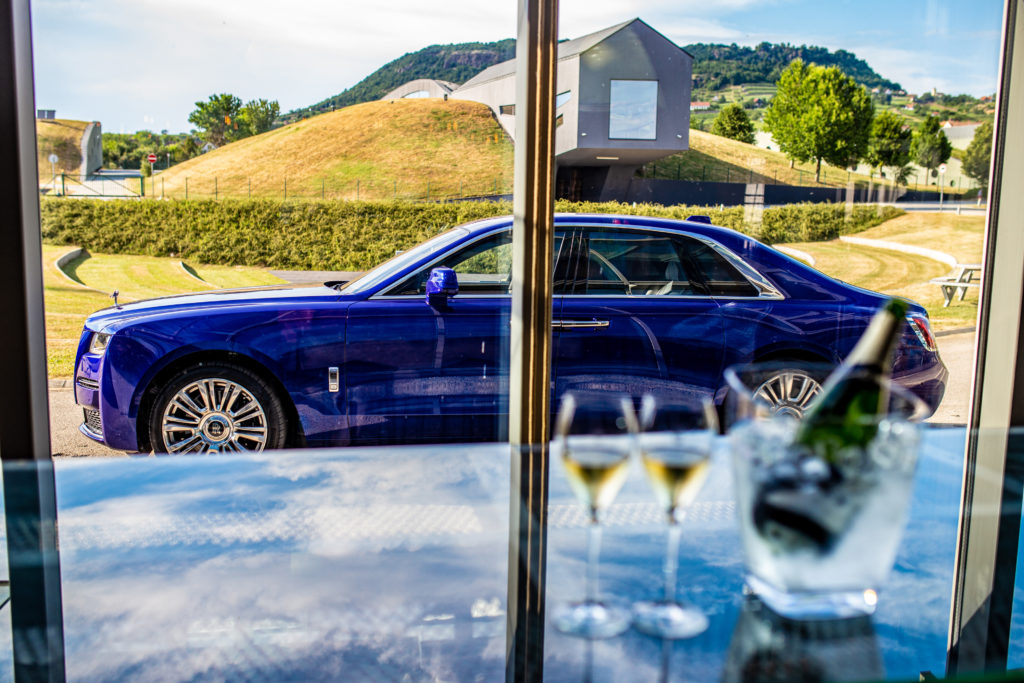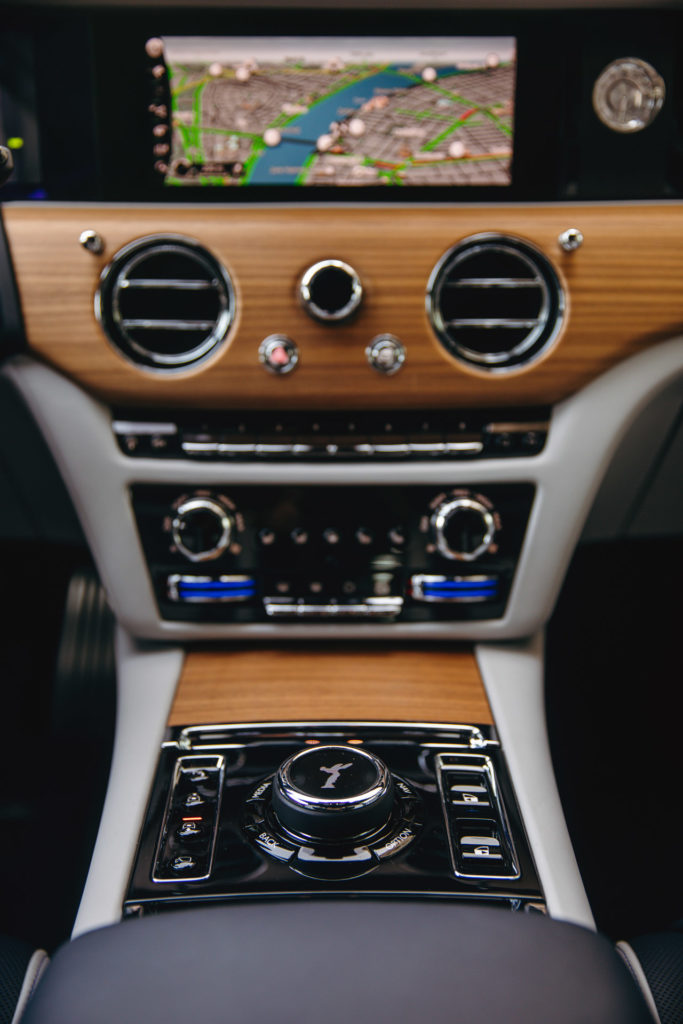The science is clear: shared experiences are more valuable than pure materialism. Gentlemen's Watch therefore drove 527 kilometres from Budapest to Prague to test it out. In a Rolls-Royce Phantom, that is.
Text Jorrit Niels Photography Rolls-Royce Motorcars, Four Seasons
That 'science', by the way, is not just a study by a regional university in search of some fame. This fact comes straight from Dr Thomas Gilovich, Professor of Psychology at the prestigious US Cornell University, who has been researching the link between money and happiness for more than two decades.
 The studies and findings of Gilovich and colleagues once again confirmed the Easterlin paradox. This shows that money makes people happy, but only to a certain extent. Take a study in which people were asked to self-report their happiness with both material and experiential purchases. Earlier, their happiness with those purchases was about the same. But over time, people's satisfaction with 'stuff' decreased, while people's satisfaction with the purchased 'experiences', increased.
The studies and findings of Gilovich and colleagues once again confirmed the Easterlin paradox. This shows that money makes people happy, but only to a certain extent. Take a study in which people were asked to self-report their happiness with both material and experiential purchases. Earlier, their happiness with those purchases was about the same. But over time, people's satisfaction with 'stuff' decreased, while people's satisfaction with the purchased 'experiences', increased.
Ironically, the fact that a material thing is always present works against the feeling of happiness. This is because you adapt to its presence, it fades into the background and becomes part of a new normal. So while the happiness of material purchases diminishes over time, purchased experiences become an ingrained part of your identity. And thus of your intrinsic sense of happiness. Thus Gilovich.
 Stained glass
Stained glass
We couldn't have wished for a better practical test, when Rolls-Royce in collaboration with the luxurious Four Seasons invited us to experience a trip from Budapest to Prague. That was right at the time when travelling was slowly becoming more normal again. And while more and more is possible, Covid taught us one thing: always be ready to travel 'differently'. Instead of flying to the other side of the world with the risk of being stranded when the borders close, you can also take the car. So after Slow Food and Slow Fashion, there is now Slow Travel. Not necessarily in a camper van, as Four Seasons hotels offer a comfortable alternative: Scenic Routes. Take a trip from Lisbon to Madrid, from Paris to Cap Ferrat or so from Budapest to Prague.
In Budapest, the Four Seasons Gresham Palace is probably the best address in town. Located on the Danube; opposite the famous Chain Bridge. The view is impressive in a city teeming with architectural monuments.
The Gresham Palace is a separate building. It is an Art Nouveau gem dating back to 1907. Named after Sir Thomas Gresham, founder of the Royal Exchange in London and was once home to the Gresham Life Assurance Company.
 A little further on, in the Jewish Quarter, you can alternate luxury with Szimplas, or 'ruined bars'. In abandoned warehouses or houses bombed in W.W. II, you now find bars with impressive courtyards that look rather Berlin-like.
A little further on, in the Jewish Quarter, you can alternate luxury with Szimplas, or 'ruined bars'. In abandoned warehouses or houses bombed in W.W. II, you now find bars with impressive courtyards that look rather Berlin-like.
You can also get more luxurious with a cocktail at Muse, the new cocktail bar in Gresham Palace. Here, you will travel back in time to Budapest's golden age. The bartender, Ádám Rédli, left the Artesian in London, returned home and created the cocktail menu. The food is served on Herend porcelain and created by chef Árpád Győrffy in the spirit of Asian-Hungarian fusion cuisine. From Thursday to Saturday, musicians and dancers perform and create a new golden age atmosphere under the dazzling stained glass by Hungarian Miksa Róth (1865-1944).
Bauhaus
Slightly regretting that last cocktail, we set off for Prague the next morning in an emerald green Phantom. Of course with everything you expect from Rolls-Royce. Such as umbrellas hidden in the doors, a champagne cooler built into the backrest or a starlit roof.
 On the 527-kilometre road to Prague, be sure to make a stop in Czech Brno. The Czech Republic's second-largest city is a must-see for Bauhaus enthusiasts. In particular, Mies van der Rohe's Villa Tugendhat, declared a UNESCO World Heritage Site. The building has some stunning design elements, such as the large onyx wall separating the living room and library, and the semi-circular dining room with wood panelling. In addition, it features then-technological marvels. Such as one-touch installation of 5×3-metre glass windows in the floor, an air-conditioning system and a home cinema. Brno has hundreds of other modernist buildings from the interwar period; such as Josef Kranz's 1927 Era Café.
On the 527-kilometre road to Prague, be sure to make a stop in Czech Brno. The Czech Republic's second-largest city is a must-see for Bauhaus enthusiasts. In particular, Mies van der Rohe's Villa Tugendhat, declared a UNESCO World Heritage Site. The building has some stunning design elements, such as the large onyx wall separating the living room and library, and the semi-circular dining room with wood panelling. In addition, it features then-technological marvels. Such as one-touch installation of 5×3-metre glass windows in the floor, an air-conditioning system and a home cinema. Brno has hundreds of other modernist buildings from the interwar period; such as Josef Kranz's 1927 Era Café.
For the last few hours of the journey to Prague, you can take the D1 motorway, but avoid it and diversions on country roads. On whatever surface, the Rolls-Royce glides silently through the landscape. At the wheel of the Phantom, obstacles are completely absorbed.
This is the result of electronically controlled shock and suspension technology; aptly named 'Magic Carpet Ride'. The proof: when we switched halfway with our fellow passenger and lounged in the back in a business-class-worthy semi-reclining position, we noticed exactly nothing of the Czech infrastructure that sometimes leaves something to be desired.
 Hipster
Hipster
Once we arrive, we briefly swap 'our' Rolls Royce Phantom for the Ghost, which, with its slightly more limited size, conveniently serves as an explorer in the Czech capital. Checked in, we see that the Four Seasons Prague has an unrivalled view of Charles Bridge. Just parked and ready for dinner, we move to the MIRU rooftop terrace. Right in the heart of the Old Town, with a dreamy panorama of the Vltava, Charles Bridge and Prague Castle all around. The hotel itself is a collection of buildings from the Neo-Renaissance, Neoclassical and Baroque styles. The view sums up more than 1,000 years of history. One that can also be seen from the hotel's own wooden boat, including a knowledgeable captain. But most of all, prefer a walk. Across Charles Bridge, past the Franz Kafka Museum for a pretentious intellectual boost, through the Opera towards the Holesovice district. There you'll find Vnitroblock, a mix of hipster concept stores, food trucks, coffee bars and art galleries.
It is the perfect pause before indulging in the lavish opulence of the Phantom again. Nothing is perfect, but the Phantom certainly comes very close. After all, you don't just sit in this car, you get absorbed in it. As an experience, how the interior feels, what it does to you, is almost as important as the ride itself. Not to mention, of course, how it looks as it manoeuvres through traffic. Because as we followed the Phantom on a brief drive in the Ghost through downtown Prague, we really understood what a unique machine that Rolls-Royce Phantom really is...



